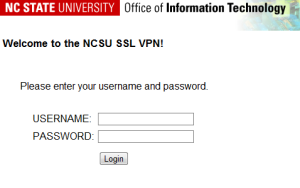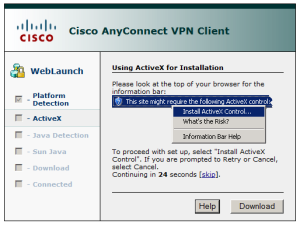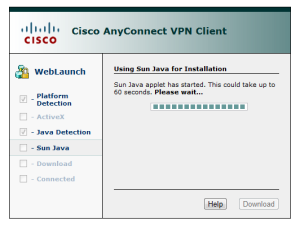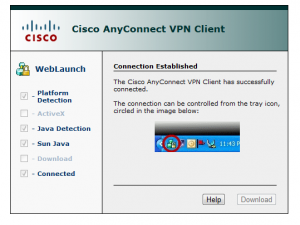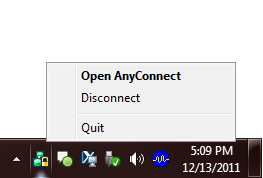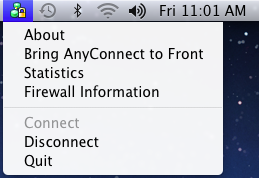NCSU VPN
Jump to navigation
Jump to search
NC State University's SSL VPN Service
To access secure campus resources at NC State University, VPN client software must be installed on the off-campus computer. When opened, the VPN client requires a username and password to verify the user's identity. Once the user's identity has been verified, the program connects the machine to a virtual NC State network, allowing access to restricted services.
All users should note that NC State University's Computer Use Regulations apply to VPN. For details, please view the VPN Acceptable Use Policy.
Please also review the system requirements for your operating system at these links:
Installing the Cisco AnyConnect VPN Client
There are two methods for installing the Cisco AnyConnect client.
- The first method installs the client automatically via the SSL VPN website, and can be used for Microsoft Windows and Linux machines.
- The second method is to download the client from NCSU Comtech's website and install it manually. Manual installation is required for Mac OS machines, and can be used for Windows and Linux machines if the automatic method fails.
METHOD 1 - Automatically via Web Browser
|
|
- If you are using Microsoft Windows and Internet Explorer, the installer will use ActiveX to install the client. Figure 2 below and to the left shows the start of this install.
- If you are using a Linux distribution, or Microsoft Windows with any other web browser, the installer will use Java to install the client. Figure 3 below and to the right shows the start of this install. If you do not have Java, you can download it from here.
- Before the client begins installing, your operating system will likely ask your permission to allow the VPN site to install or run certain components. These prompts may come up as toolbars at the top or bottom of your browser, or they may come up as new dialogue boxes. Figure 4 shows a prompt for the ActiveX install, while Figure 5 shows a prompt for the Java install.
- Accept or allow as needed and the client installation will begin.
- If the client install is successful, it should automatically connect to the VPN service. The SSL VPN website should then display a page similar to Figure 6 below. (NOTE: This particular view was captured from a Windows machine, but a Linux machine should display a similar page.)
|
|
